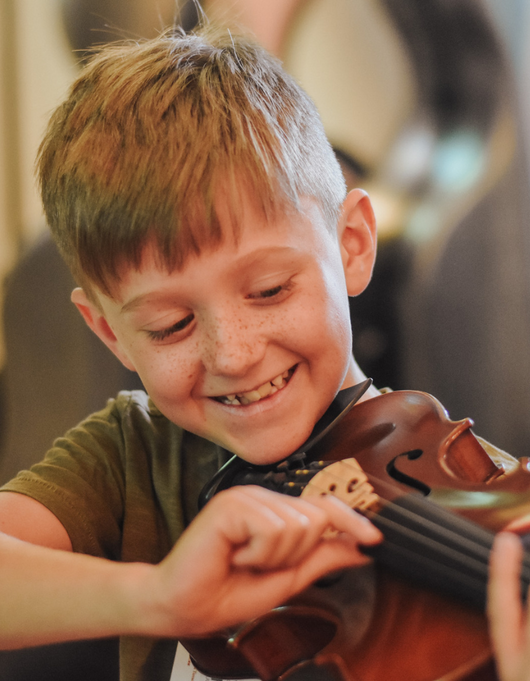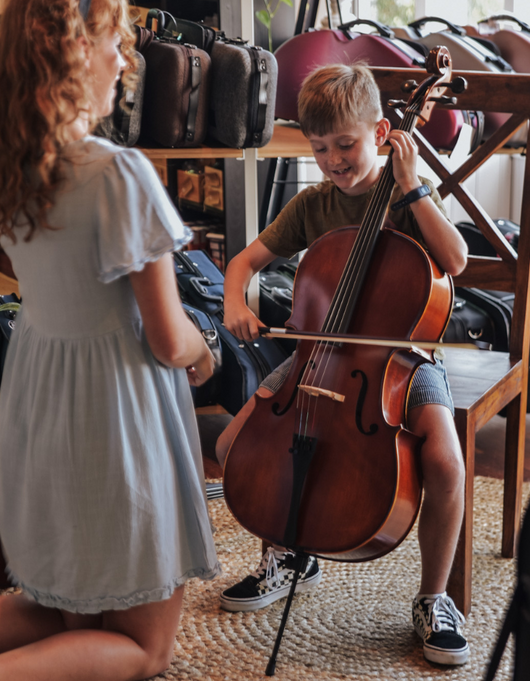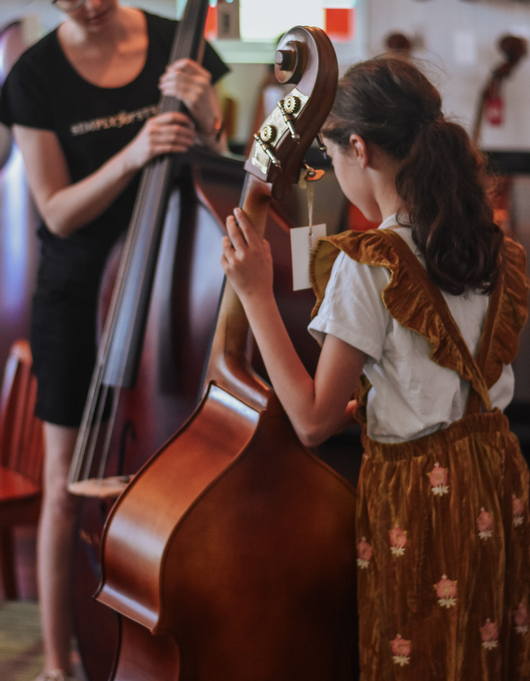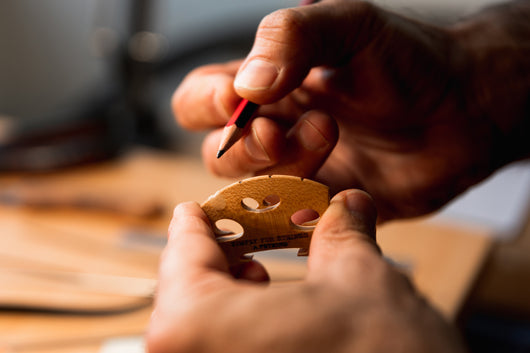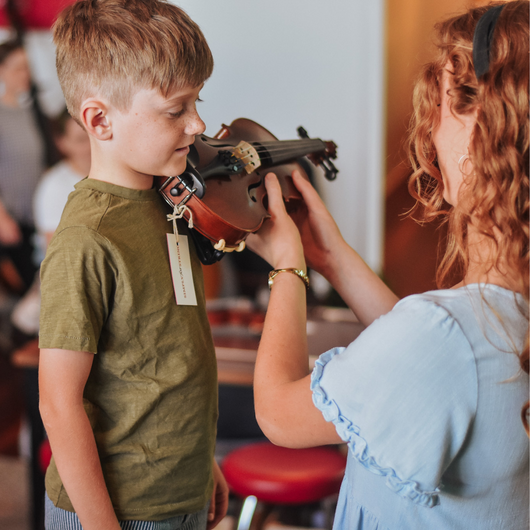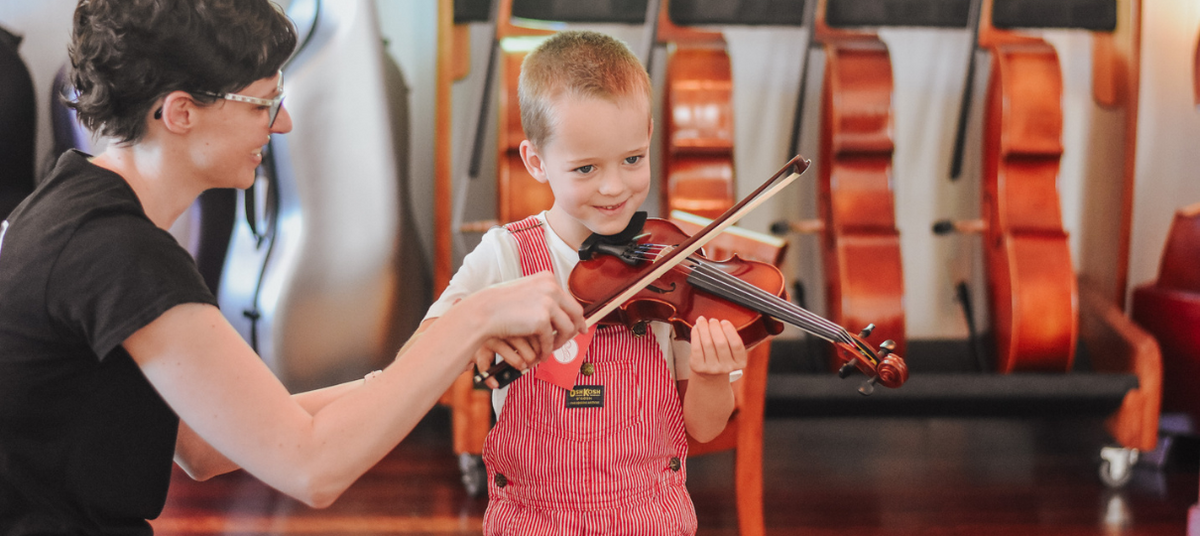We’ve recently reached out to some teachers to see what their top tips for recruitment are! We hope you enjoy it. If you have some tips you’d love to share with the teaching community, we would love to hear from you. Get in touch with our dedicated Education team today.
Q: How many students do you aim to recruit each year?
How long is a piece of string! Obviously, the allocation of time dictates how many students you can have. In order to have time to deliver quality teaching, it usually sits around six students per lesson. 10 students in a class at the beginner level is difficult, although cuts in allocations can lead to this happening. And then sometimes you get the privilege of 3 in a class!
Recruitment is an all-year round job. Make sure you're always promoting your music program to the key decision makers in the school community, parents and other students. Cultivate interest throughout the school year so students can see what your program is all about.
From Music Achievement Council: "Every music educator must be able to explain, demonstrate and promote the value of music and define its role in the curriculum. Besides being able to articulate the benefits of an education in music, educators must actively pursue opportunities to advocate for music education in their communities. It is important to remember that many people confuse the music program’s utility with its academic value. They understand the goals and achievements of teaching performance skills, promoting school spirit and public relations, encouraging group discipline and teaching cooperation. Although you should include these points and those cited in the most current research, you must always reinforce the goal of music education for its intrinsic value. You should concentrate on musicianship, aesthetic awareness and the study of high-quality literature as well as providing entertainment. Often, the public will join the decision makers in eliminating music programs due to pressure to reduce budgets or to increase the teaching of the so-called basics. You will draw the public to your side however, if you believe and demonstrate that music is more than a tool for teaching other subjects, but rather an essential part of a well-rounded education that will provide students with fulfilling and enriching experiences."
Q: What do you check before recruitment?
It’s a good idea to check in with the classroom teacher. They can give their recommendations, plus provide information on absentee and lateness records, and other history which could be relevant to you.
From Yamaha Australia: "This could include discussions with teachers about student behaviour, personality, work habits, perseverance, family support, etc. Armed with this information, the goal is to target students with the preferred personality dispositions and aptitudes, and strongly encourage them to take up a significantly larger proportion of the instruments that are more difficult to recruit. This ensures that you have a much better chance of keeping these instruments in the cohort as it goes forward. This is predicated on the notion that your strongest recruits are most likely to be successful and continue."
Learn more about the benefits of learning a string instrument here.
Q: Do you use the Selmer Test?
The Selmer test is designed to assess the musical aptitude of our incoming students. It allows teachers to make an informed instrument recommendation that best fits the individual student.
When it comes to school results vs selmer test results, sometimes the wild card child, spectrum child or just loves classroom music turns into your greatest asset. Differentiation is important.
From the Music Achievement Council: "Be sure that the students understand that everyone is welcomed and encouraged to be an integral part your program. It may be a good idea to allow several of your current students to speak about how much the program means to them personally to help eliminate any fears students may have about whether or not they will be successful."

Q: How to allocate string instruments to the students?
Demonstrate the entire string instrument family to the students so they have an understanding of what each instrument sounds like. When using the Selmer Test, have students indicate if they don’t like the higher pitch, often high spectrum students struggle with the upper register.
There’s a few physical things to check. Sometimes it’s as easy as checking whether or not the student is double-jointed, or has smaller fingers, hand size etc. For double basses...check car type!
Great ensembles are those that can hold a beat and tune, I like to put my strongest players on bass. You can then build from the ground up... chords and rhythmic independence.
From Yamaha Australia: "Take popular instruments out of the limelight. If you are going to have instrument demonstrations so that students and parents know what their instrument options are, be sure that demonstrations of the less popular instruments are the most impressive, and consider making the sax, flute, drums and other popular instruments, less so. This helps make up for the inherent bias in student knowledge and notions of which instruments are “cool”. It could work to have the jazzy, highly appealing demo pieces on the instruments that need the promotion and less exciting examples on those that need less promotion. Also consider which students demonstrate which instruments. More “popular” students on the less popular instruments can help. If you are lacking appropriate student demonstrators consider guest artists or YouTube clips."
Q: How do you involve parents in recruitment?
It’s important to have buy-in and commitment from the parents as well as the students. Help the parents understand how they can support their student at home, whether it’s visually with finger placement stickers, posture, feet and body alignment or aurally if they have an ear or knowledge of music themselves. The student needs to know where to go for support and help during their musical journey.
A big thing is helping parents understand resilience is generated through music, persistence is needed and patience is too. These young students are used to technology and having everything at their fingertips, so they need to understand this is something they have to work for.
Ensure that students and parents appreciate the full value of an education in music. In addition to the fulfillment that comes with music-making, students also acquire skills that will serve them well as they move into adulthood. These include social skills, self confidence, teamwork, responsbility and organisation.
As an aside - music stand advice is required! Let parents know to teach their child how to put up their music stand to avoid breakages and encourage good posture.
Feel free to share this link with your parents: Parent's Guide to Music Lessons.
Q: How to select the right sized instrument?
During COVID, professionals need to do the instrument sizing. String musicians at your local music store will be able to assist with this.
Q: What to tell parents to look for in an instrument?
Many parents will not know the ins and outs of string instrument making. Make sure parents understand they are investing in their child’s future - a better quality instrument gives a better long term outcome. If the instrument can’t hold tune or the instrument needs work, it can be more difficult to work with.
If parents are looking to purchase second hand instruments, make sure the parents know to look for intact instruments (no open seams), functional fine tuners and new strings. If the instrument has been serviced, that’s a big plus. Is the bow functional too? Is the rosin in one piece? Does the case close properly?
As we move into more broken families... check support in moving instrument books etc across families, or does each house require a set.
Read our Parent's Guide to Buying Your Child's First Instrument.
Q: What is your practice expectation at the beginning?
A few days a week, 10-15 minutes per day. Be realistic, and make it doable for beginner parents, little people, muscle memory needs to develop, physical strength and endurance. Time frames grow over time, and when the novelty wears off, support is at hand.
Read our 8 Ways to Motivate Yourself to Practice blog post.
We hope you found this blog post informative! For more advice from our team of musicians, teachers and luthiers, get in touch with us today.



